Samsung Galaxy Z Flip5 2023 – the almost perfect Flip (smartphone review)
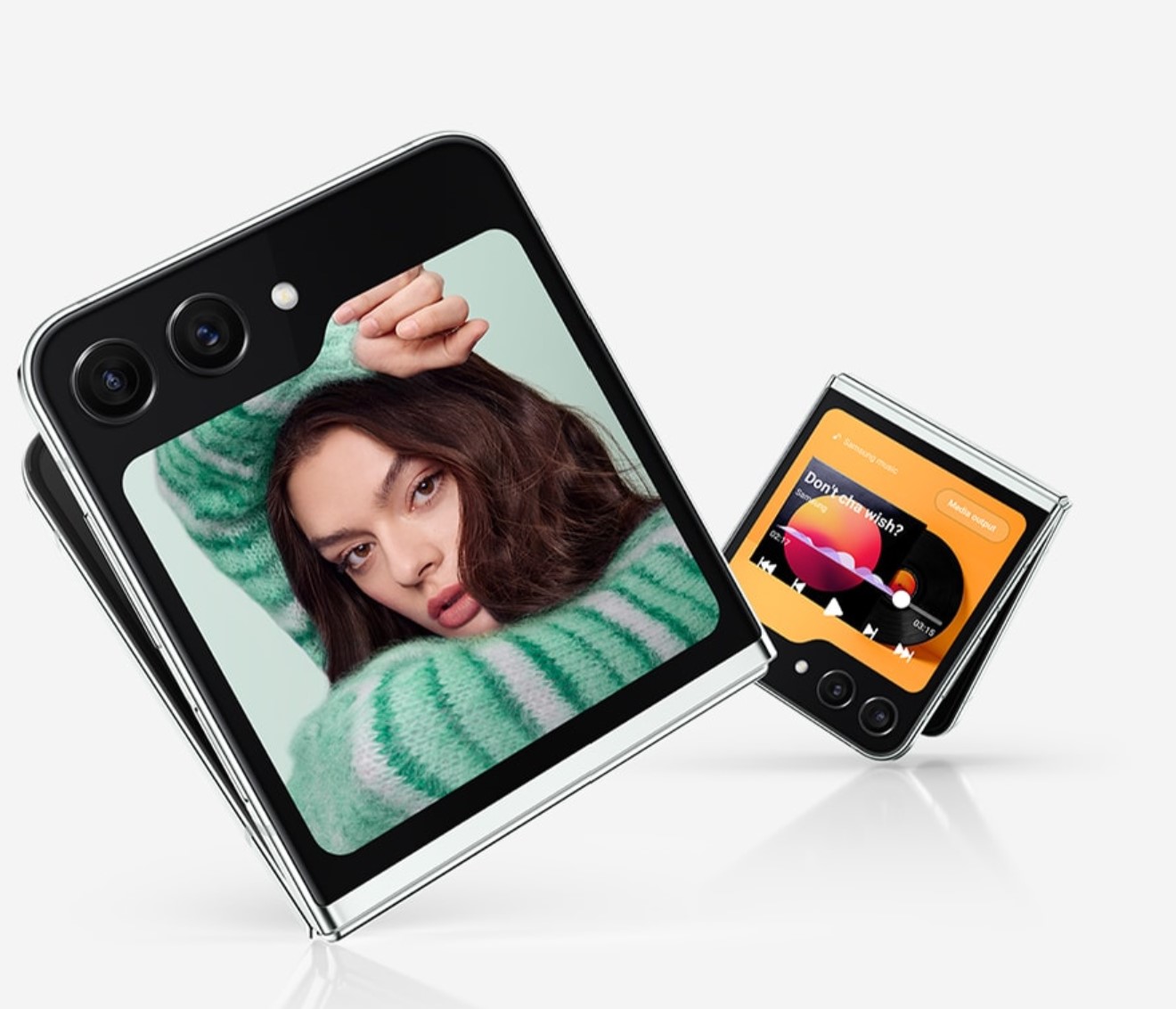
The Samsung Galaxy Z Flip5 builds on the heritage of the original Flip (2020), Flip3 (2021), and Flip4 (2022), addressing any shortcomings of previous generations as the technology becomes more Flip-friendly.
For example, it has gone from a 1.1” 300 x 112 to 1.9” 512 x 260 on the Flip4 to a 3.4” 748 x 720 external screen. Tick off one objection. It has managed to get a fold-flat hinge instead of the gap of its predecessors.
It has implemented the latest tech like the Qualcomm SD8 Gen 2 processor, X70 5G modem (the first to allow dual active sims DSDA), LPDDR54X and UFS 4.0 fast RAM and storage.
Practically, it uses the same camera sensors as the Flip4, and while some may think that is an Achilles heel, you must remember that the SD8 Gen 2 has way more AI post-processing power for excellent point-and-shoot photos and up to 4K@60fps video (30fps with OIS and EIS)
The purchasing decision comes down to whether you are prepared to pay a premium for the Samsung Galaxy Z Flip5 when there are better-specified glass slabs offering vastly more flexible camera setups, longer 5000mAh battery life, and are not as fragile as the Flip internal screen.
Consumer Advice
Samsung does not publish detailed specifications, which we need as a basis for a comparative deep-dive review. Those it does are sometimes ambiguous, marketing-driven, or only partially meaningful. It makes our tasks much more onerous than when we review other brands that provide specs. So forgive us if there are any errors – it is what our test equipment and analytical software shows.
Samsung Galaxy Z Flip5, 8/256GB, SIM/eSIM Model SM-F731B
| Website | Product Page and hardware Manual (US version) |
| Price | 8/256 $1649 8/512 $1849 Optional 25W charger with 1M USB-C-USB-C 3W cable $50 Cases from $69 to $149 (strongly recommended) |
| Colours | Standard colours: Mint, Graphite, Cream, Lavender Samsung Online Exclusive colours: Grey, Blue, Green, and Yellow |
| From* | Samsung online, Telstra, Optus, Vodafone, JB Hi-Fi, Harvey Norman, The Good Guys, Amazon, Officeworks, Bing Lee, Woolworths, David Jones, Myer, Costco, BIG W, Target, Radio Rentals, RT Edwards, Retravision, Betta and Australia Post. |
| Warranty | 24-months ACL |
| More | CyberShack Samsung News and Reviews |
* Grey market – no Australian warranty, and 5G may not work here
We strongly advise you to buy a genuine model with Australian firmware. Regrettably, it is not easy as the Settings, About Phone, Regulatory Labels and Australian RCM C-tick mark is missing. This may be due to the review phone. But you should insist on a screen grab if you buy anywhere else.
Australian certified phones use unique Australian 5G sub-6Ghz and 5G low-band frequencies, requiring local activation first. Read Don’t buy a grey market smartphone.
Deep-Dive review format
It is in two parts – a summary (first) and a separate 300+ line database-driven spec, including over 70 tests to back up the findings. It also helps us compare different phones and features.
We use Fail (below expectations), Pass (meets expectations) and Exceed (surpasses expectations or is the class leader) against many of the items below. We occasionally give a Pass(able) rating that is not as good as it should be and a Pass ‘+’ rating to show it is good but does not quite make it to Exceed. You can click on most images for an enlargement.

First impressions – you will either Flip or not – Pass+
The Samsung Galaxy Z Flip5 is an impressive phone with polished or colour-matched alloy frame edges, Gorilla Glass Victus 2 back, and Flex Window protection. When open, it is a glass slab, and when closed, the larger 3.4” Flex Windows (Samsung’s marketing term for the external cover screen) adds more value than the smaller Flip4 screen.
A significant improvement is the Flex Mode hinge, which is almost infinitely adjustable from folded to tent to flat. I have been using it in L-shape mode on a desktop for video conferences. We will discuss the Flex Window later.
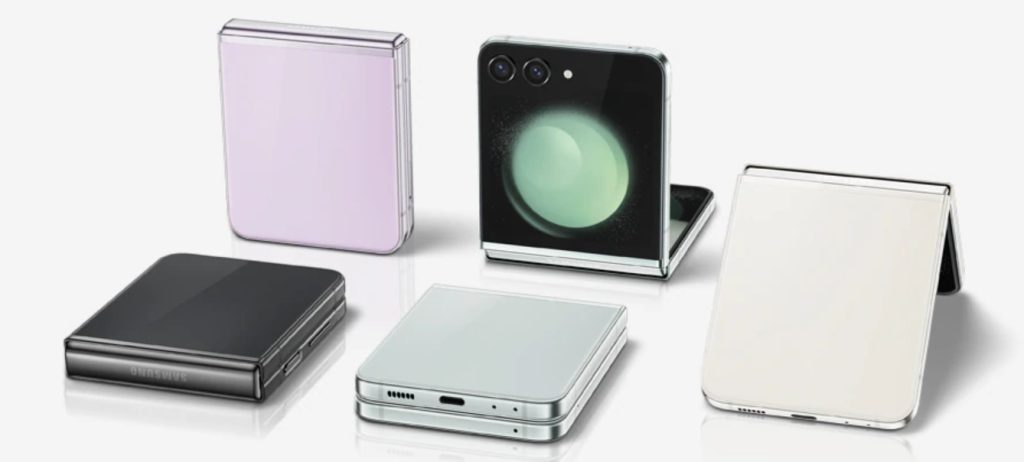
Open it up, and you have a bright, 22:9 (tall and slim) screen. This is where we must issue some caveats. At the end of the review, you will see teardown videos from Jerry Rig and iFixit. Things like the effect of dust on the hinge, screen hardness, and issues of reliability and repairability. Please watch them before you Flip out over the Flip.
Screen: 2640 X 1080, Up to 120Hz AMOLED 2X – Pass+
This is a bright, infinite contrast AMOLED screen. Colours are over-saturated in Natural (sRGB mode). In Vivid mode, they are nearly 100% of 16.7M of the DCI-P3 movie gamut (about 60% of 10-bit/1.07 billion colours). My only comment is that more premium phones now use 10-bit/1.07 billion colour AMOLED screens, essential to creators, photographers, and videographers. Read 8-bit versus 10-bit screen colours. What is the big deal?
Samsung claims XXX/1000/1600 nits HDM/peak brightness. We don’t doubt the claims, but peak brightness is a less-than-relevant marketing term for brightness to display HDR10+ content in 2% of the screen – not the whole screen. It will play Netflix, Prime, and YouTube 1080p HDR content.
It (not the Flex Window) has settings for ALS (Adaptive Light Sensor) and HBM (High Brightness mode).
Tests show it is typically around 400/700/1566 nits with ALS Off/ALS On HBM/Peak.
Forget it for gaming, even though the SoC Processor has a tonne of power. Folding screens are soft (Mohs hardness 2), fragile, easily scored with a fingernail (Mohs hardness 2.5), and you need to use a very light touch.
The crease, however, is ever-pervasive. It is not only visible but there is a definite channel to get over, given the need to constantly swipe up and down.
Motorola and OPPO have managed almost to eliminate the crease. Why not Samsung? We expect it is because of the IPX8 rating. X means it is not dust resistant, and 8 means 1.5M fresh, still water for 30 minutes. The Hinge is exposed to dust and water.
If you wear polarised sunglasses, you are in for a real trip – a kind of rainbow effect and colour banding in HBM mode.
Summary: A colourful, eminently daylight-readable screen typically 400 nits to 700 with ALS (not 1600!).
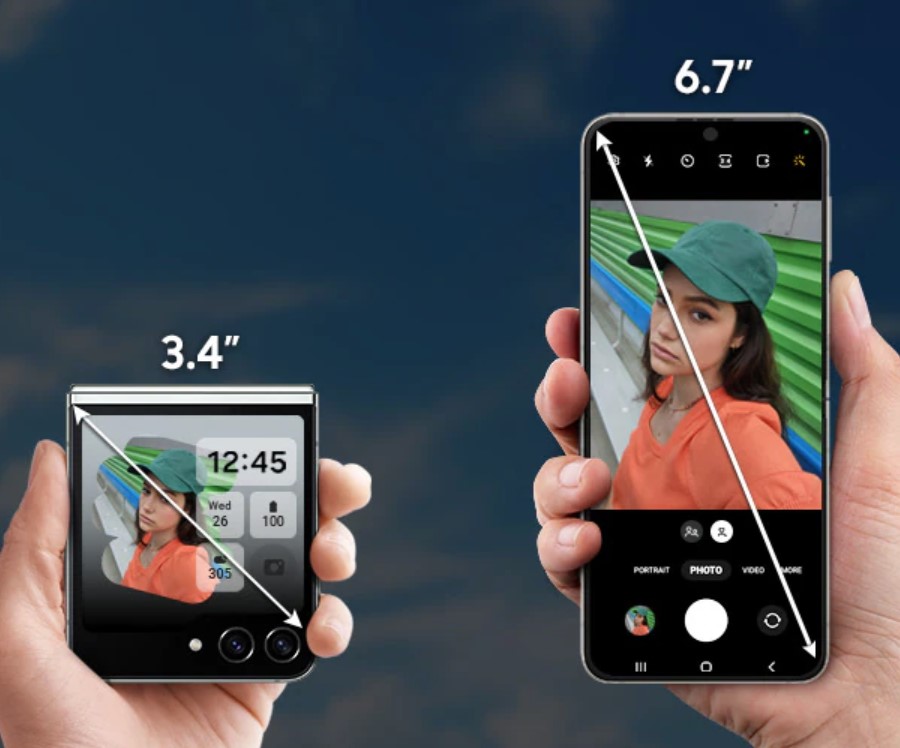
Flex Window – Pass
The most significant criticism of flip-style external screens has been size and usability. Samsung has addressed this with a 3.4” screen (minus a notch around the dual cameras), but it needs to do much more on usability.
Swipe left/right/up/down widgets almost entirely drive it. It does not run full-screen Apps, although there is mention of limited Apps coming in ‘Samsung Labs’. Apart from several styles of clocks, a media player, a too-small QWERTY keyboard, and a selfie preview, the widgets include:
| Calendar | Weather | Recent Calls | Direct Dial |
| Alarm | Stopwatch | Timer | Voice recorder |
| Steps | SmartThings routines | Finance watchlist | Daily Activity |
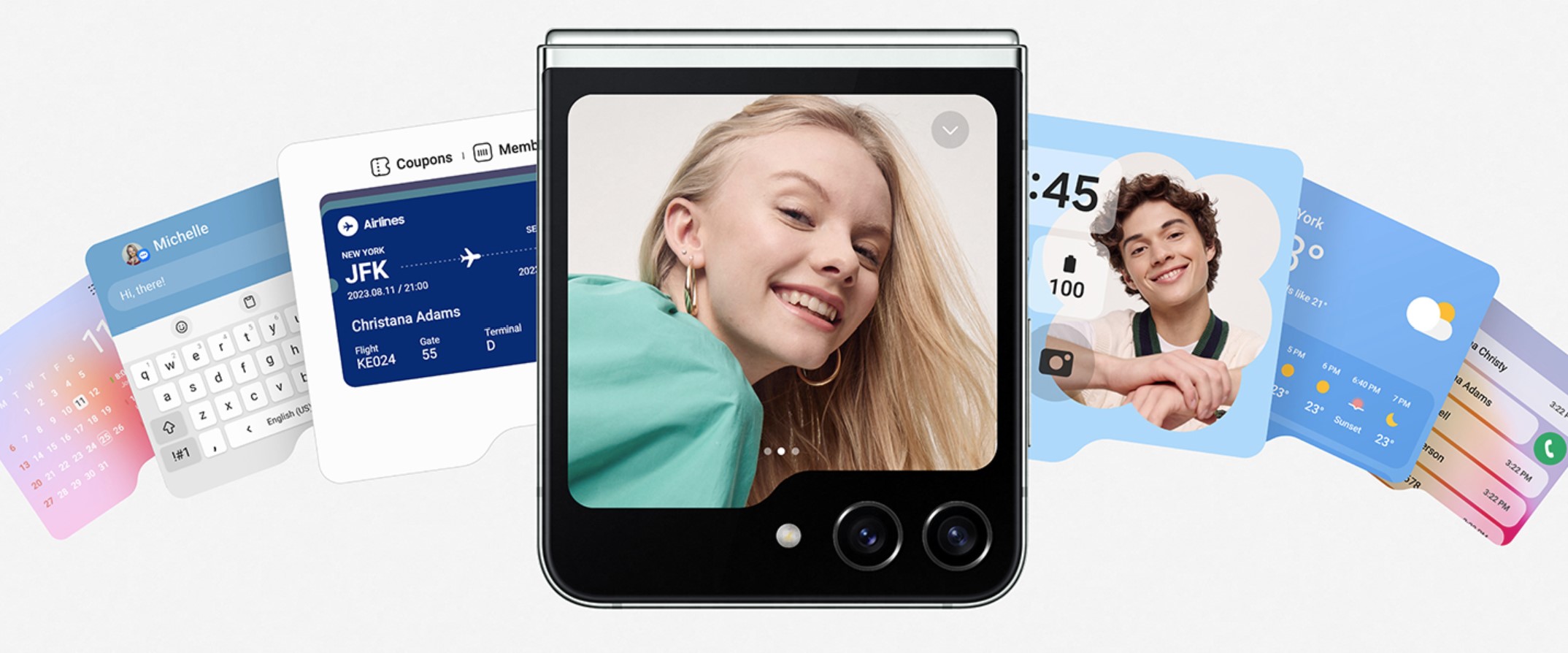
After two weeks of use, I did not find the Flex window as useful as the Motorola Razr 40 Ultra 2023. It has a larger screen and better App implementation, allowing a mix of widgets, some Apps in full screen and a smoother transition from the external to the internal display and vice versa.
It is protected by Gorilla Glass Victus 2 (GGV2) with a Mohs hardness 6 to withstand pocket scratches.
Samsung claims 1750 nits peak brightness (only a meaningful measurement if playing HDR content). Tests show 420/1290 Typical/Peak (no HMB Mode). It is daylight readable, but the GGV2 is reflective.
Summary: The purpose of an external screen is to minimise the opening and use of the internal screen. We appreciate the size increase, but it is less useful than you imagine. We hope Samsung continues to work on this aspect.
Processor – Qualcomm SD8 Gen 2 Galaxy edition – Pass+
The Galaxy Edition clocks the prime core at 3.36GHz (standard is 3.2GHz), and the 719GHz Adreno 740 GPU now has Ray Tracing. Finally, the new X70 5G modem is the first to support DSDA (dual sim, dual active). It is a terrific engine, albeit the power is overkill for a Flip, and there are resultant heat and throttling issues.
It is married to 8GB of LPDDR5X (fastest RAM) and 256GB (207GB free) UFS 4.0 (fastest storage). There is no microSD (not expected), but the USB-C 3.1 Gen 1 port only supports OTG cut and paste to an external flash drive or SSD. That rules this device out for creators, Vloggers and professional users that need fast mountable storage for live video, etc.
Geekbench 5 single/multicore is 2043/5361 – the fastest Android SoC ever tested.
Throttling – Pass for typical users but Fail for gamers and power users
We ran twenty tests (100% load) over the review period in ambient temperatures from 8-20°. We also placed the device on different surfaces to see if their temperature conductivity made a difference. The short answer is that our review reports the BEST result, not the worst.
- Maximum billion instructions per second (GIPS) 360,519
- Average GIPS: 224,963
- Minimum GIPS: 163,675
- Throttle: 50% (results as high as 55% throttle, admittedly at 20° and sitting on a non-conducting material).
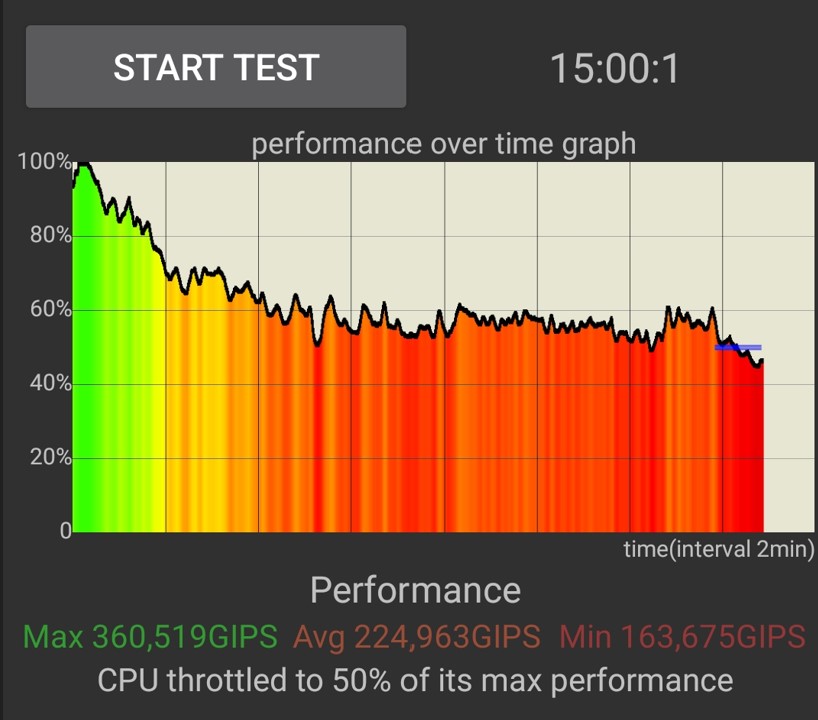
One thing became obvious – this is a hot phone. The rear and front’s top half typically reached 45-47°C (113-116°). It won’t burn but can be quite hot against your face in use.
Summary: Typical users won’t ever reach 100% load (4K@60fps video will reach that), but gamers, creators, Vloggers, and professional users will.
Comms – everything you expect – Pass+
- Wi-Fi 6E AXE, HE160. It kept the maximum 2400Mbps full duplex on the 6GHz channel to 5 metres, dropping to 1729 at 10m. 6E has a shorter transmission distance, and as expected, it switched to 2.4GHz and 720Mbps at 15m from our Netgear Orbi RBKE963 Quad-band Wi-Fi 6E AXE 11000 mesh.
- BT 5.3 BLE supports multi-point, dual audio, and fast pairing to compatible BT 5.X devices. It has SBC, AAC, aptX, LDAC and Samsung Scalable Codec (for select Samsung earphones only).
- Dual GPS accurate to 3 metres – suitable for high-speed in-car navigation
- NFC – yes
- USB-C 3.1 Gen 1 5Gbps. This is a significant step forward over Flip4 USB-C 2.0 480Mbps. It supports ALT DP 1.4 (audio/video/data/Ethernet/charge streams), which means you can screen mirror to a TV or monitor over a USB-C to USB-C or HDMI Cable. But Samsung has left DeX (Desktop experience) out because of heat and throttling issues.
- Ultra-wideband: No – the manual states Galaxy Z Fold5 only.
Summary: All that you need, but no DeX or Ultra-wideband.
4 and 5G – City, suburbs and regional city use – Pass+
It has a single SIM and an eSIM, although you may find a DS (Dual SIM variant). The Qualcomm SD8 Gen 2 and X70 5G modem is the first to support DSDA – dual SIM, dual active for 4G and 5G. Without getting technical, all older phones are DSDS – Dual SIM, dual standby are for one-at-a-time use.
DSDA means both active, so in theory, you can aggregate downloads from two different mobile numbers, make a phone call while online gaming, be on the phone with a second call on hold, etc. Many features, however, are yet to be implemented by the Telco carriers.
It finds all four test towers at usable signal strengths (up to 2.5pW – picoWatts), although some we have tested reach 6pW for the nearest tower, hence the Pass+.
Phone Summary: We are happy to rate it suitable for major cities, suburbs, regional cities, and areas with reasonable tower coverage. Rural or remote users should look at the Telstra Bluetick Samsung Galaxy S23 Ultra or Motorola ThinkPhone that reach over 6pW.
Battery – depends on use – Pass
It has dual 4.47V batteries in serial with a nominal capacity of 14.35Wh/3700mAh. The main is 10.47Wh/2700mAh (test 10.16Wh/2620mAh) and the secondary is 3.88Wh/1000mAh (test 3.76Wh/971mAh). It is rated for a maximum charge rate of 9V/2.77A/24.93W.
The good news is that the batteries appear reasonably easy to replace without removing the fragile inner screen.
The bad news is that Samsung does not supply a charger joining Google and Nokia in this awful practice. It means you must buy a charger (Samsung’s 25W is $50 and includes a 3W USB-C to USB-C cable). Or you can buy any larger capacity multi-port charger (preferably a GaN Gallium Nitride) from Belkin or Alogic. Don’t forget to buy a 5W cable if you select a 60W charger or larger.
Tests (Adaptive mode screen up to 120Hz)
- 1080p Video loop, 50% brightness and volume, aeroplane mode: 12 hours and 30 minutes
- PC Mark 3 Battery life office use: 11 hours 8 minutes
- Accubattery mixed use: 12 hours and 2 minutes
- GFX Bench Manhattan Game: Would not run
- GFX Bench T-Rex Game: 307.7 minutes (5.13 hours) 6573 frames
- Drain 100% load: 4 hours 13 minutes
- Drain 100% load: 2500mA
- Drain idle: 250-300mA
- Charge time 25W charger: 1 hour 26 minutes
- Charge time 10W charger: 2 hours 16 minutes
- Qi Charge time 10W Qi: Approx 3 hours
- Reverse charge 4.5W Qi for a watch: not measured.
Interestingly, no matter which charger we used (Samsung 25W, Belkin 30W, Belkin Gan 60W, Pixel 30W and Cygnet Gan 60W with 3 and 5W cables), it refused to charge at more than 9V/2A/18W.
These results are below expectations, given Samsung marketing states up to 20 hours of Wi-Fi video streaming (not our lower power, on-device video test) and 17 hours of Wi-Fi internet use (more like the 12-hour Accubattery results).
Heavy users will need to schedule a charge before the end of a workday, and typical users will charge overnight. Buy a Qi charge pad and let it top up the device as needed.
Summary: A workday at best. Carry a charger – it is a shame Samsung does not provide one.
Sound – stereo – Pass
It has a stereo earpiece and bottom-firing speaker that changes orientation in landscape or portrait mode. It uses the same speakers and amplifier as the Samsung A54 and can decode Dolby Atmos content and downmix to its two speakers.
A slight bias to the bottom speaker affects the sound stage. It is only as wide as the phone. It expands slightly with Dolby Atmos content, but no 3D spatial effects exist. The maximum volume is 80dB.
Bluetooth aptX earphones (Sennheiser True Wireless Momentum 3 BT) had excellent left-right separation, and DA settings make quite a difference with DA content. But we are less than happy with the included BT codecs – SBC, AAC, aptX, LDAC and SSC (Samsung Scalable Codec).
Samsung will not pay licensing fees to Qualcomm for the full aptX suite (only apt X is free), instead including its royalty-free SSC, which only works with select Samsung earphones. Read Bluetooth sound codecs – what you need to know as the game has changed.
Hands-free use is excellent with one top and dual bottom mics. It has a HAC rating of M3/T3 for hearing enhancements.
Sound signature – Pass
It has no low or mid-bass, slowly building high bass and mid, then flat to nearly 20kHz. This is a Bright Vocal sound signature (bass recessed, mid/treble boosted) – for vocal tracks and string instruments, but they can be harsh.
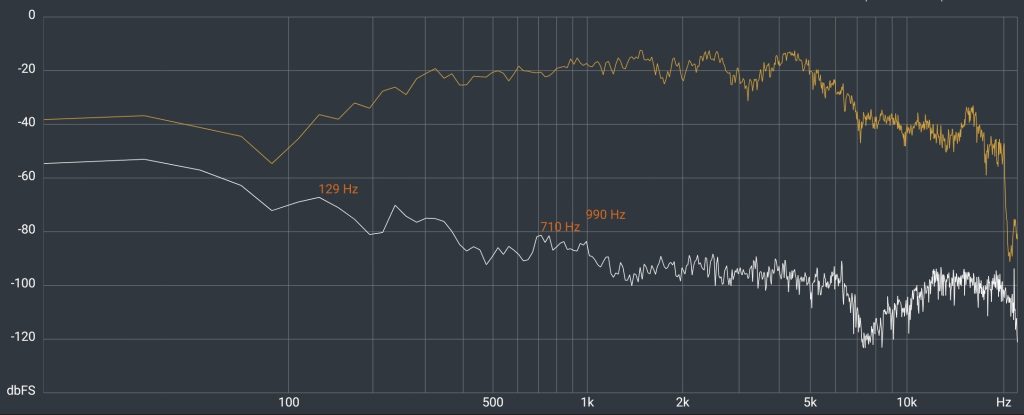
The EQ does not make any difference to the speaker’s native sound signature but can recess treble for a clearer voice.
Read How to tell if you have good music (sound signature is the key.
Summary: It lacks musically important low-mid-bass, and high bass is too late. Mid and low-mid treble are fine for music genres that don’t need much bass. If it only had more bass…
Build – Pass+
It is well-made and would have earned Exceed if not for the fragile main screen. In the first year, Samsung will do a one-time screen protector attachment (not the screen) service free of charge at an authorised Samsung service centre. Samsung will replace the inner/external screen module for a fixed price of $319/109. Alternatively, you can take out a Samsung Care+ subscription for $149 (1 year) or $279 (2 years). Prices exclude any promotional offers.
Samsung has wisely stopped advertising 400,000 hinge tests due to it setting unreasonable ACL warranty expectations. Independent tests saw the Samsung Galaxy Z Flip5 survive 401,146 folds.
It is IPX8. X means limited dust resistance (in the hinge area), and eight means it will withstand 1.5m of fresh, still water for 30 minutes.
Size unfolded is 165.1 x 71.9 x 6.9 mm, and folded is 85.1 x 71.9 x 15.1 mm x 187g – nice and pocketable.
Android 13 – Exceed
Samsung overlays is One UI over Android that enhances usability. It has a great 2+4+5 Warranty/OS upgrade/Security Patch guarantee that is hard to beat. You will get Android 17 and security patches to 2028.
Consumer Advice: Samsung Apps
Samsung has created an entire ecosystem outside Google, and its phones ship with its Apps. This is fine if you want to invest in the Samsung ecosystem. You must create a Samsung account in addition to Google’s account and accept any privacy implications.
But this can present issues for those who switch brands at the end of the device’s life. Samsung provides Samsung Switch to bring data over from other Android and iOS devices, but it may not be easy to transfer the other way.
If this concerns you, it is better to use Google Apps like Chrome, Gmail, Drive, Messages, Photos and Wallet for maximum upgrade flexibility and the ability to use Google’s copy facility to set up a new phone.
Security – Pass+
It has a capacitive fingerprint scanner on the power button (to save the screen), 2D facial recognition and pin and pattern locks.
Samsung advertises Secured by Knox, and Android 13 or later offers a security dashboard.
Missing – Nothing expected
- 3.5mm 4-pole headphone port (not expected – use Bluetooth)
- DeX (would have been nice)
- MicroSD (not expected)
- Not able to mount external SSD as live storage (an issue for power users)
- 25W charger will cost $50.
- Gaming is not advised.
None of these are deal breakers.
Rear Camera – Pass for point-and-shoot
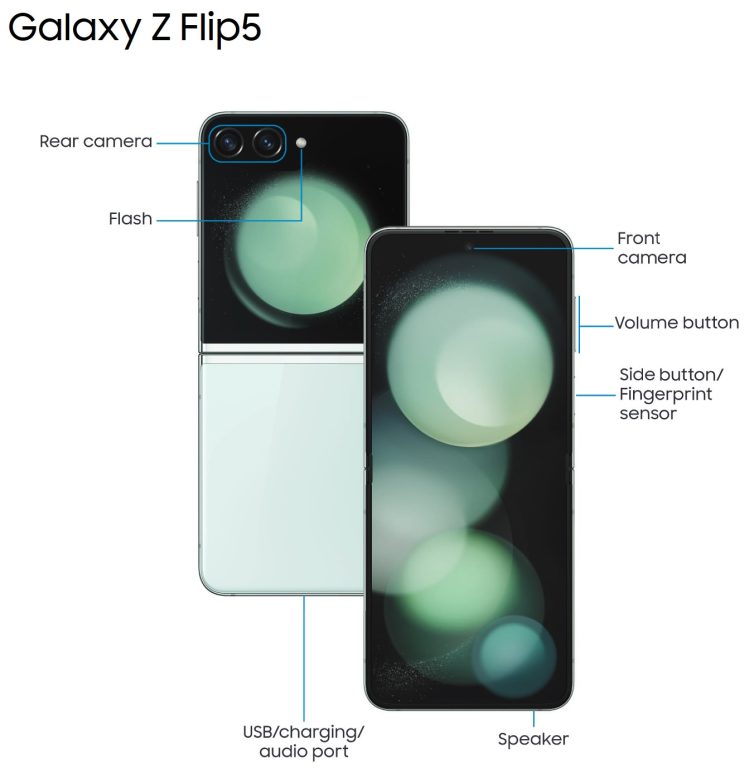
Frankly, a 12+12MP unbinned camera is not a flagship class, although we acknowledge that most larger flagship camera sensors bin to 12.5/16MP anyway and use AI to produce a superior image.
DXOMark has done a full camera analysis, and the Samsung Galaxy Z Flip5 came in at 45th place with 127 points. That is in the company of Apple iPhone 12 Pro 2020, Google Pixel 6 2020 (126) and OPPO Find X3 Pro 2020 (128). If we look at some recent flagships, the difference becomes obvious:
- OPPO Find X6 Pro 2023 – 153
- OPPO Find X6 2023 – 150
- Google Pixel 7 Pro 2022 – 147
- Apple iPhone 14 Pro and Max 2022 – 146
- Google Pixel 7 2022 – 140
- Samsung Galaxy S23 Ultra 2023 – 140
The question is how well the SD8 Gen 2 SoC AI can post-process the image taken by what is essentially the Flip4 2022 camera setup that scored 112.
Back to the 12+12MP.
The wide primary sensor has PDAF (fast autofocus) and OIS (optical image stabilisation). It has a relatively large F/1.8 aperture and large 1.8um pixels, making it good for day, office and night light shots.
The Ultra-wide is fixed focus, f/2.2 and 1.12um pixels. It is purely there to take in a vista – more of the Grand Canyon. In good light, it is fine. In office and low light, it is not.
AI is used for depth (bokeh can be hit and miss), to clean up digital zoom (past 10X is a no-go), and Night Mode (Samsung calls this Nightography).
Samsung generally takes images with over-saturated colours that we all crave. As far as we are concerned, it is a decent point-and-shoot camera, perfect for social media shots.
Selfie
You should use the 12MP wide primary sensor or 12MP Ultra-wide for selfies, as you can use the Flex Window as a preview screen. It takes excellent selfies. The 10MP F/2.2, 1.22um internal camera is now relegated to a video conference camera.
Video – We are not experts
4K@60fps on the 12MP wide primary or 10MP selfie lacks OIS or EIS – it is shake-heaven. The default should be 4K@30fps or 1080p@30fps – with OIS and Qualcomm EIS (which crops to the horizon).
We were slightly stunned at the 4K@30fps video size – over 1GB in three minutes (double that for 60fps). This device has about 200GB free (virgin space), so videos fill it quickly. You cannot use an external SSD as mountable (Iive) storage, so you must cut and paste to an external flash drive or SSD.
Camera comments
- 1X Day Primary sensor – the colours are excellent if over-saturated with good dynamic range. Good details in the background, shadows and highlights, although there is some noise in the background.
- Ultra-wide: Second sensor: good colour and details
- 2X Day Primary sensor – colours are excellent with good dynamic range. The background is getting noisy.
- 4X Day Primary sensor. Excellent foreground details, but AI is over-sharpening the water (looks crinkly) and more noise in the background.
- 10X Day: Primary sensor: Forget it
- 20X Day Primary: Ditto
- Macro: There is no macro setting, and we could not get a decent close focus with the primary sensor.
- Indoor office light: There is a pinkish cast. Colours and details are excellent, and the dog’s face/ears are deep black.
- Bokeh Depth: It is a bit light on (bokeh level is adjustable), but still an excellent shot
- Dark <40 lumens: It has great details and colour – better than night mode on most cameras.
- Night mode brings up the detail and saturates the colour – excellent
- Selfie: The 10MP selfie has natural skin tones, details, and a range of filters to enhance any image. Best in daylight. We repeat – use the 12MP instead.
- Video (we are not video experts): You can shoot at 4K@60fps (no OIS/EIS), but we think the sweet spot is still 4K@30fps or 1080p@30fps for excellent, OIS/EIS stable video and audio.
Camera Summary: While it is not a flagship camera, it is a decent point-and-shoot that will serve most users well.
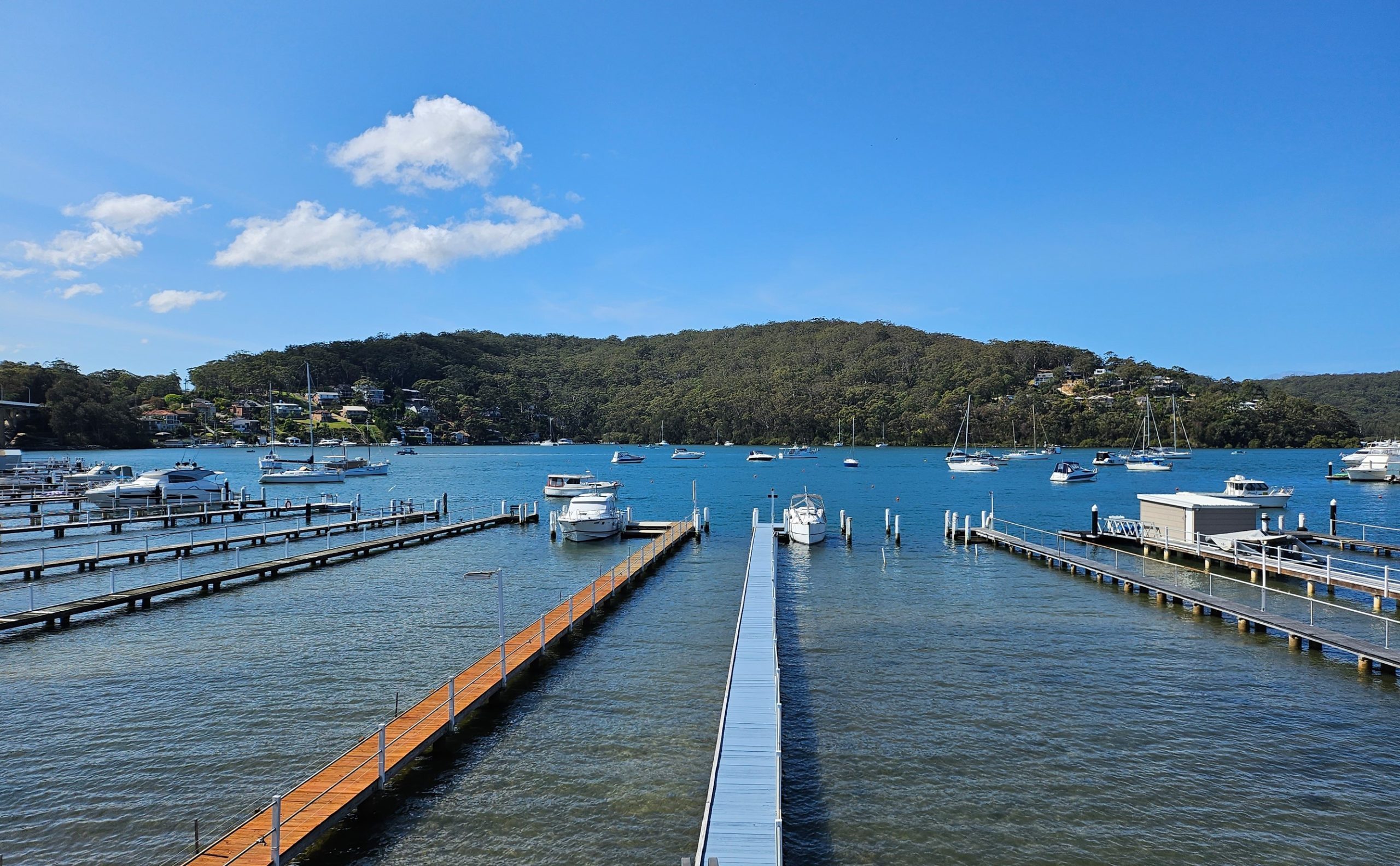
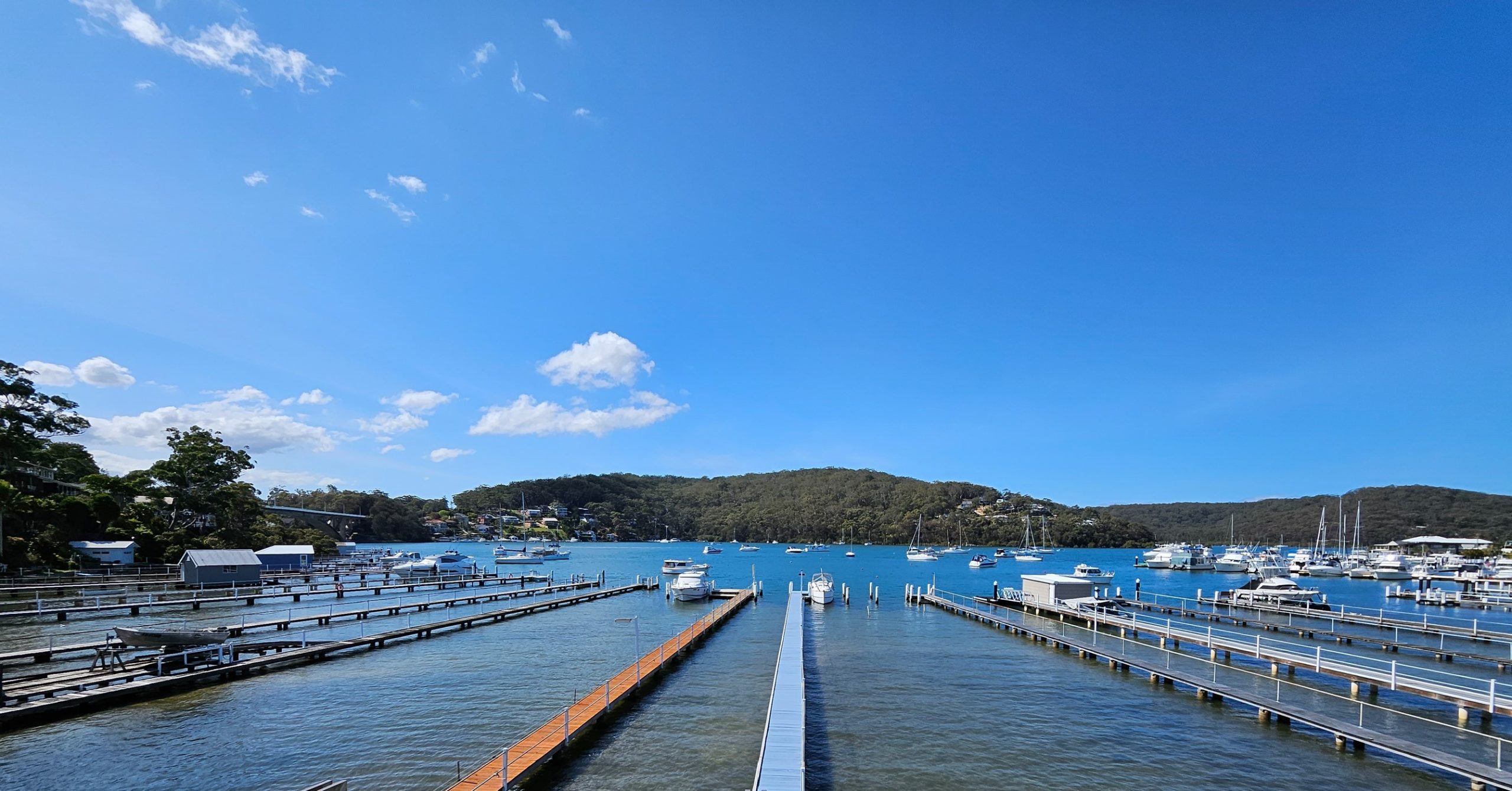
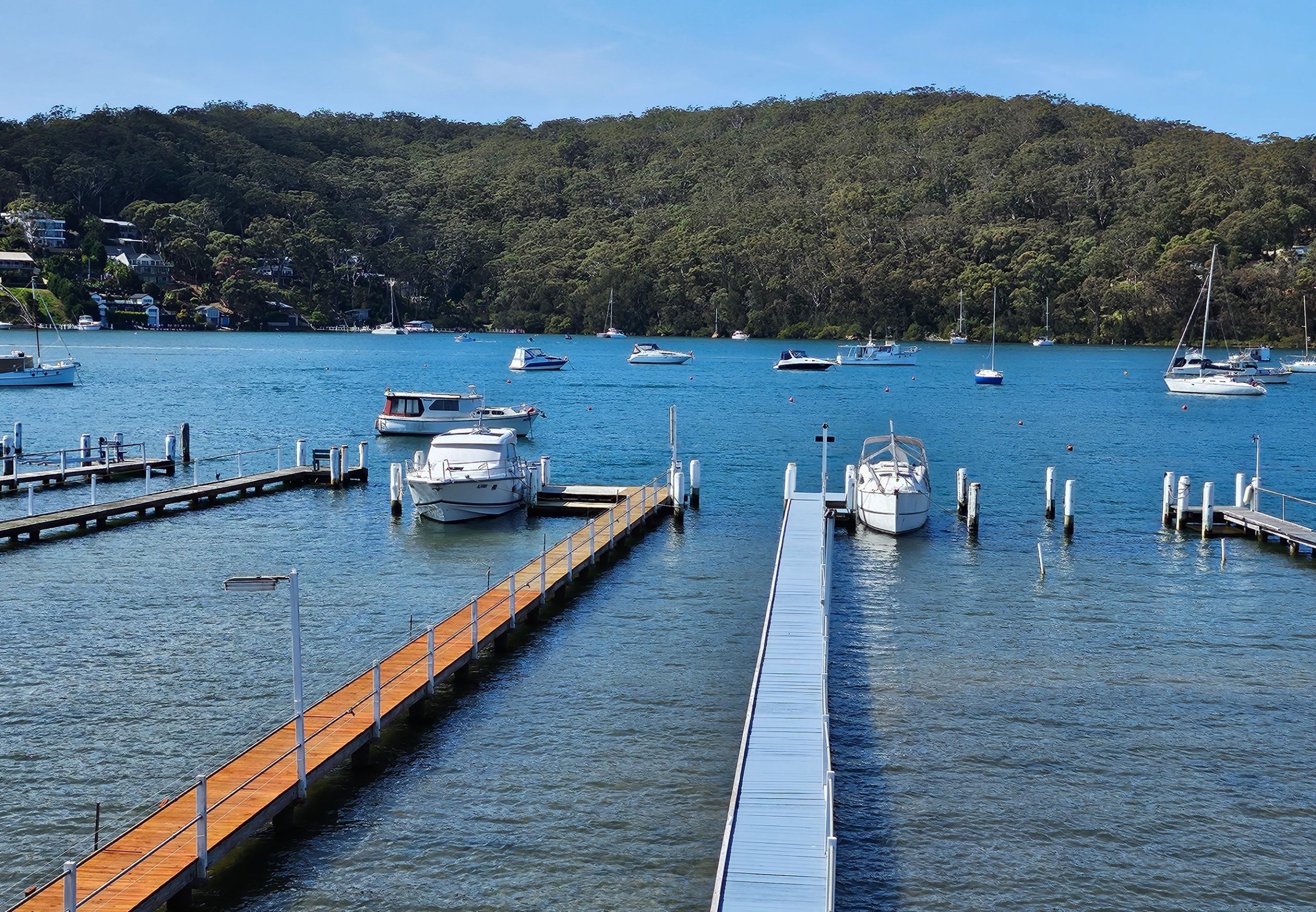
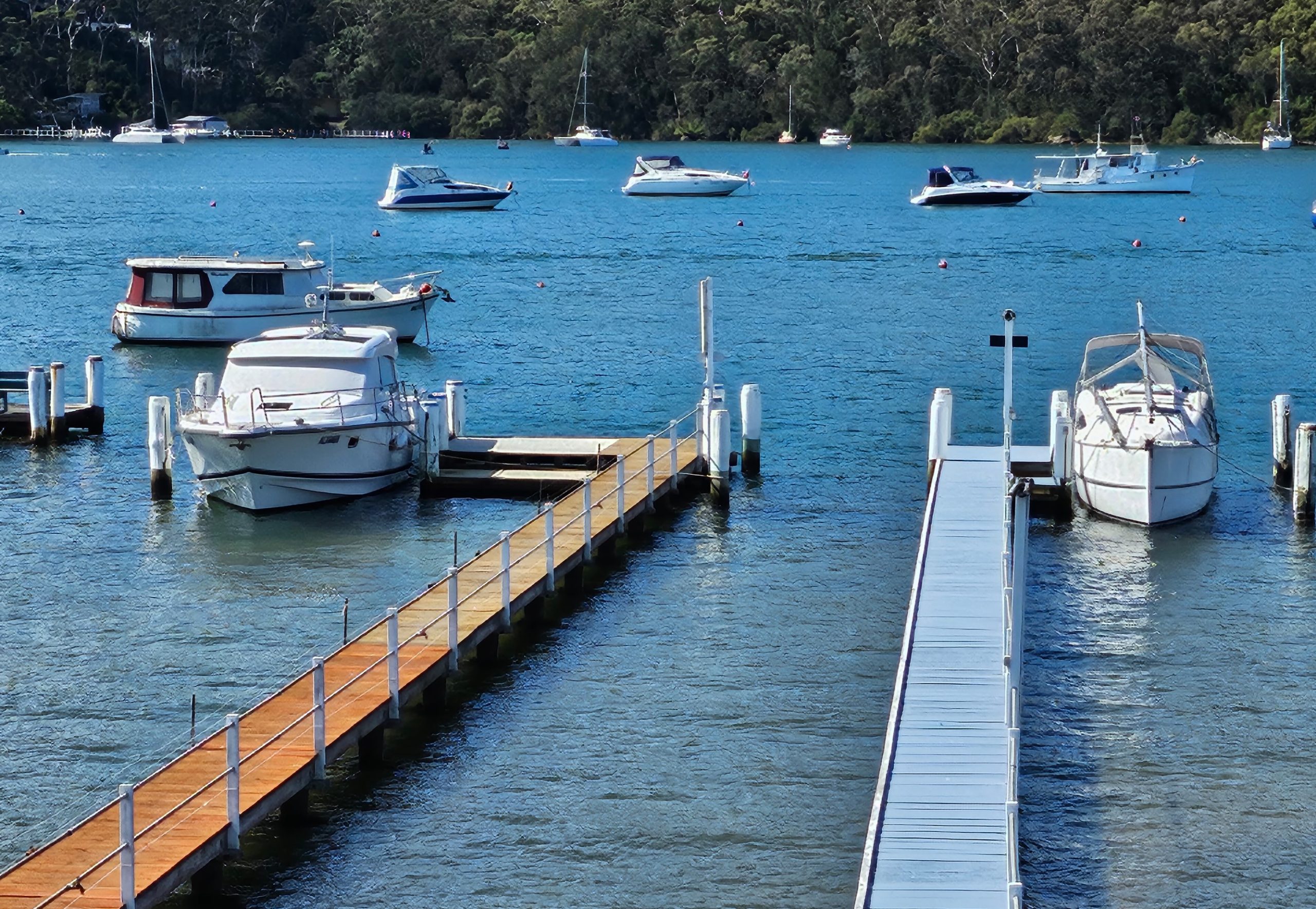
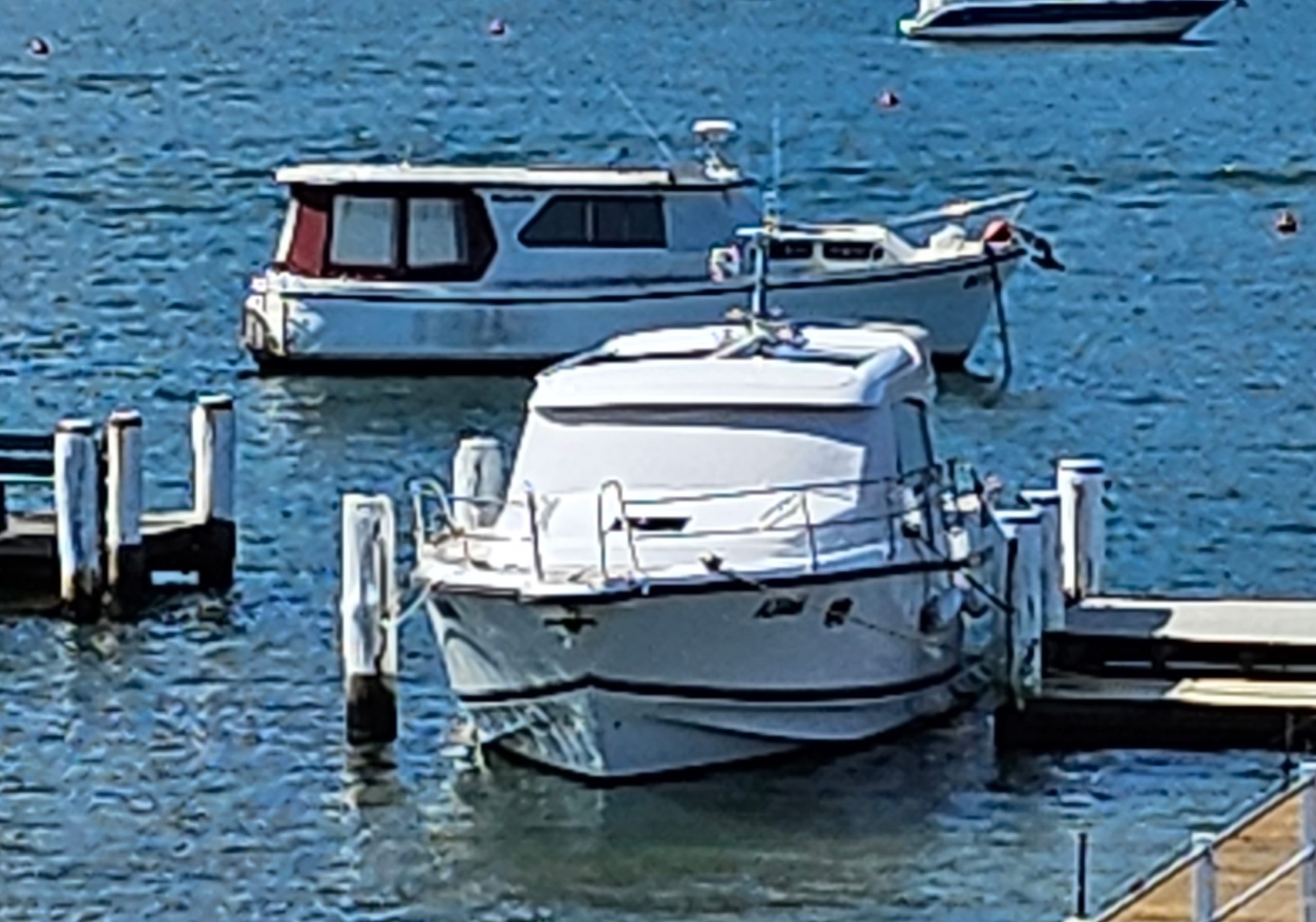
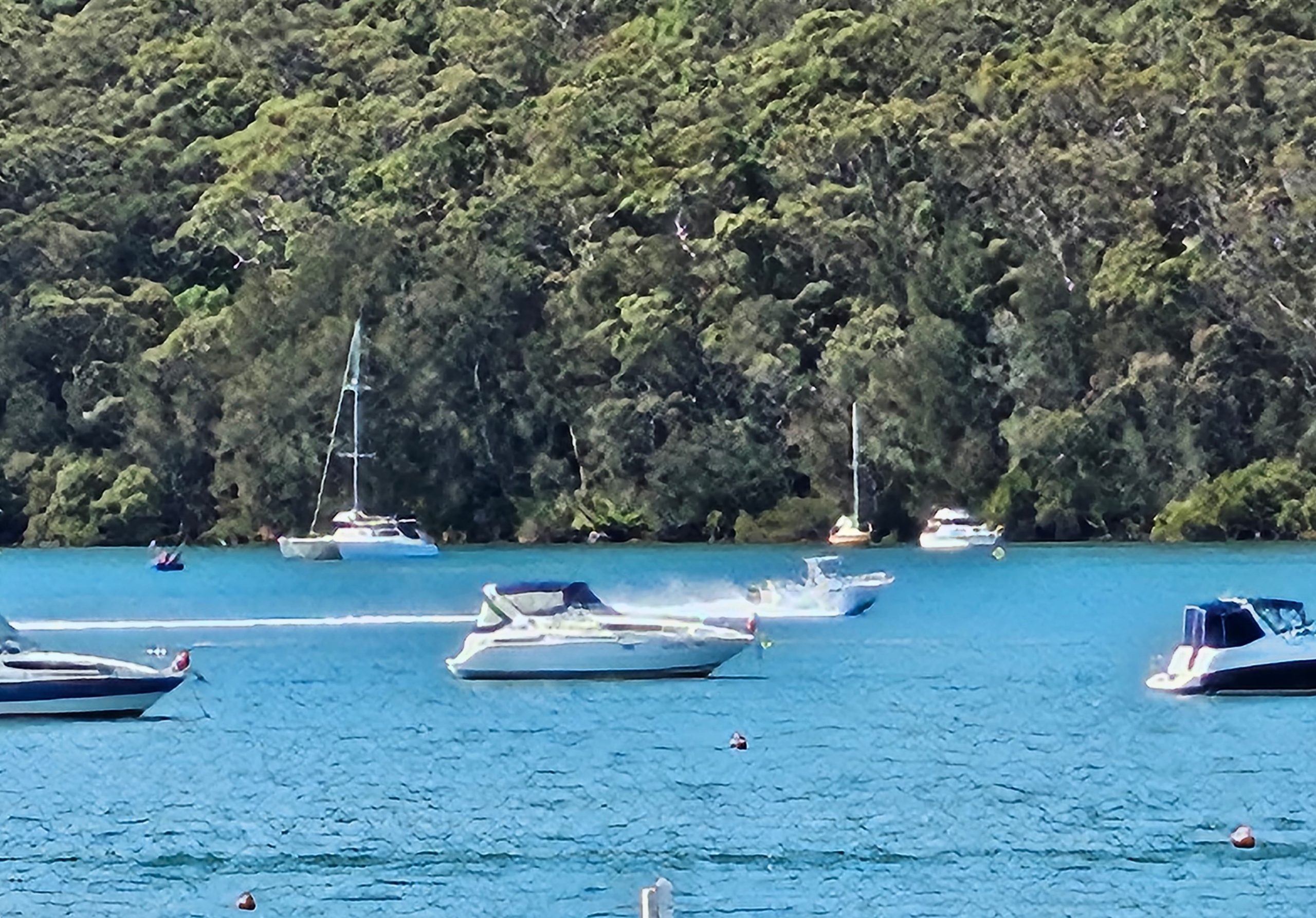
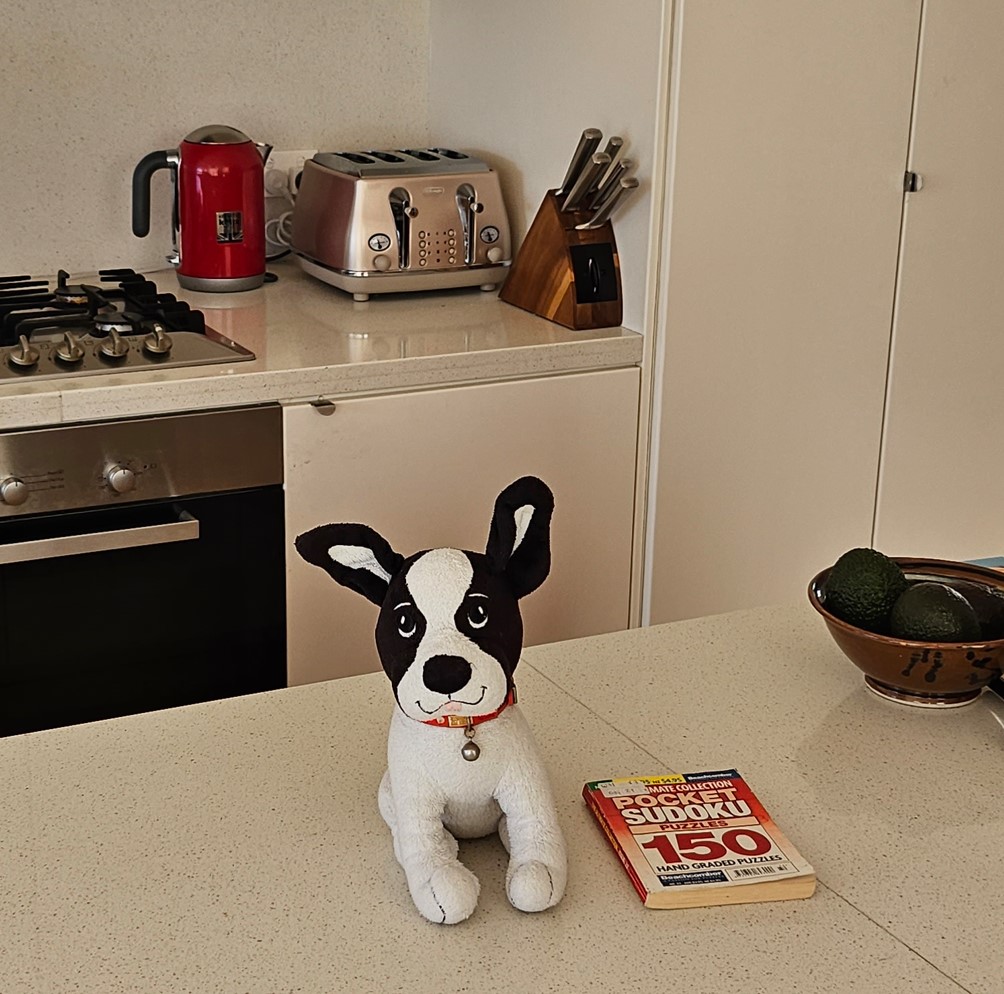
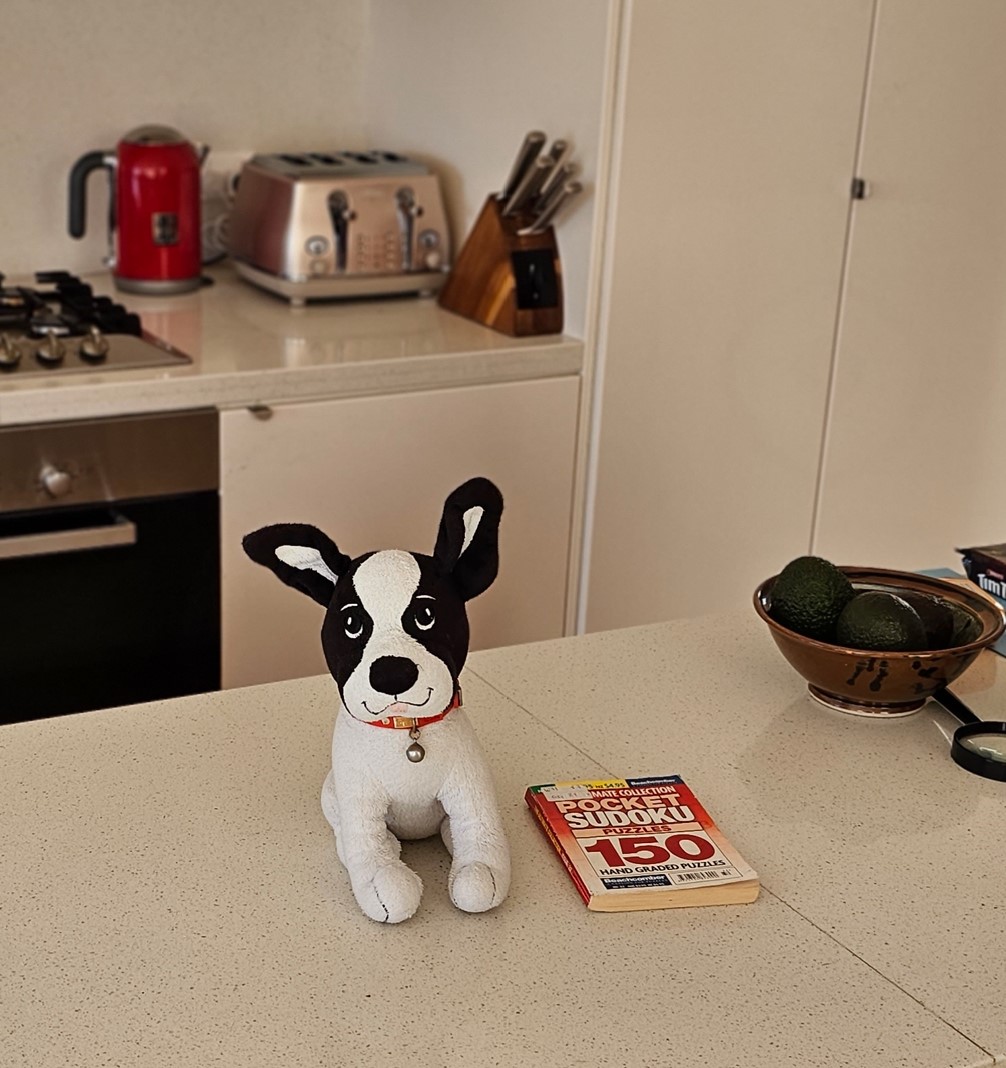
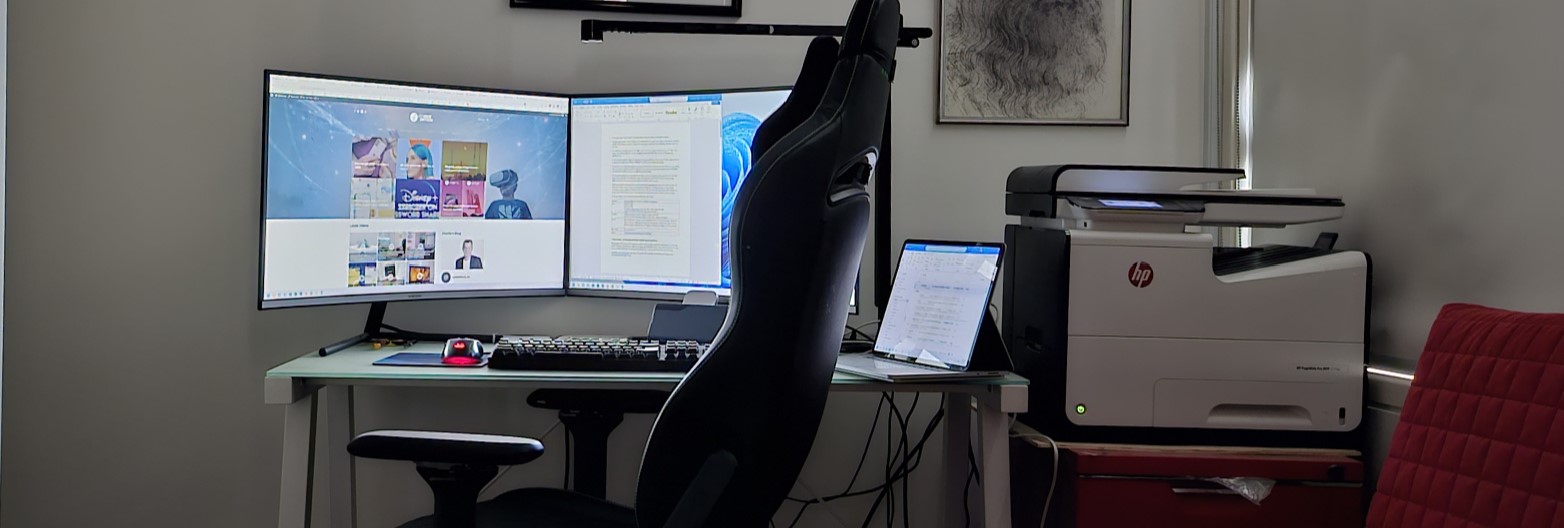
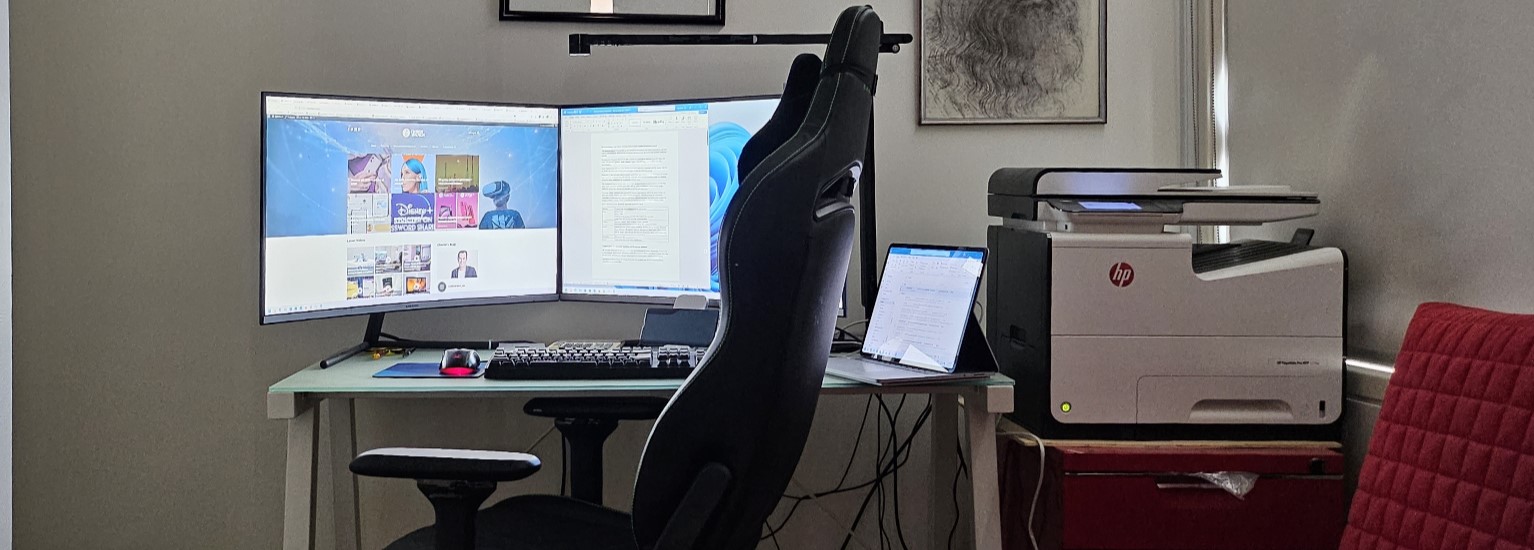
CyberShack’s view – Samsung Galaxy Z Flip5 is what Flip users want
To quote the respected and wryly irreverent John Davidson of the Financial Review, “The Galaxy Z Flip5 is the pick of the bad bunch [of Flips] … and I will never own it.”
Not to pour fuel on the fire, but Flippers buy on style, not substance, and pay handsomely for the privilege. You can get way more amenities, features, better cameras, longer battery life, and value from the current Samsung Galaxy S23 series (S23 $1399, S23+ $1599 or S23 Ultra $1649). These are what I would buy.
Competition
Its competition is the Motorola Razr 40 Ultra 2023 – it is finally flipping right, and the OPPO Find N2 Flip – it is flipping good.
If I could take Motorola’s superb 10-bit/1.07 billion colour 165Hz internal (no crease) screen and its larger 3.6” 10-bit/1.07 billion colour external screen, OPPO’s impressive 4300mAh battery and 67W charger inbox, and OPPO’s 50+8MP MariSilicon NPU/Hasselblad collaboration rear and 32MP selfie camera and fuse these into the Flip6 (2024), it would be a phone I might own.
You see, the Samsung Galaxy Z Flip5 leads the pack today, partly because it is the latest entrant, and let’s face it, Samsung’s marketing budget alone could buy New Zealand several times over😁. It is cool to own a Samsung – especially on a Telco plan where the cost is amortised.
The next cab off the rank is OPPO’s Find N3 – due out any day. It looks more like what I need with a 50+32+48MP rear camera, 32MP front camera, better battery life and charger, and Wi-Fi 7. Who knows what the Motorola Razr 2024 will bring?
Ratings
- Features: 90 – It has everything you need from a Flip. Work must be done to make the Flex window more useful; the camera is not the flagship class.
- Value: 85 – It is comparable to other Flips, although the Motorola screen is 10-bit/1.07 billion colours. You must buy a 25W charger.
- Performance: 90 – World’s fastest SoC. Yes, it majorly throttles, but remember, a Flip is not a gamer or heavy user’s phone.
- Ease of Use: 85 – 2+3+5 warranty/OS/security patch. One U1 5.1.1 has many Samsung-specific features that will draw you into its ecosystem. Good phone reception. Flips all need a two-handed operation. Battery life may leave you wanting.
- Design: 95 – Well-designed, new hinge
Pro
This Samsung Galaxy Flip5 is not a flop
The camera is adequate – not outstanding.
2+4+5 warranty/OS upgrades/and security patches are hard to beat
Excellent phone reception for city, suburbs, and regional towns. Rural or remote users may need to look elsewhere.
Well-built, IPX8, but the screen is fragile and still has a noticeable crease.
Con
Extreme throttling, no mountable external SSD storage, no DeX, no charger inbox
The larger external screen is good but needs more work to be truly useful
An 8-bit/16.7m colour screen is not appropriate for a premium flagship
Battery life is somewhere around 8-10 hours in typical use
You pay a premium for a Flip when glass slabs offer better value and more features.
Jerry Rig
iFixit
CyberShack Smartphone comparison v 1.8 (E&OE)
Samsung Galaxy Z Flip5
| Brand | Samsung |
| Model | Samsung Galaxy Z Flip5 |
| Model Number | SM-F731B |
| Price Base | 8/256GB $1649 8/512GB $1849 |
| Price base | 8/256GB |
| Price 2 | 8/512GB |
| Warranty months | 24 |
| Tier | Flip |
| Website | Product page |
| Manual | Hardware manual (not Android user manual) |
| From | Samsung Online and approved retailers |
| Country of Origin | Korea |
| Company | Samsung is a South Korean multinational manufacturing conglomerate headquartered in Samsung Town, Seoul, South Korea. Samsung Electronics (the world’s largest information technology company, consumer electronics maker and chipmaker. |
| More | Samsung publishes few meaningful specifications. Most of these come from testing and analytical software. |
| Test date | 14-30/08/23 |
| Ambient temp | 10-20° |
| Release | August 2023 |
| Other models not for Australia (Don’t buy) | Do not buy 731 models followed by U, U1, W, N, Q, or W. DS = Dual SIM; otherwise, eSIM and SIM. |
Screen
| Internal/External cover display | |
| Size | 6.7″/3.4″ |
| Type | AMOLED 2X/AMOLED |
| Flat, Curve, 2D, 3D | Flip folded/’notch’ cut around the dual camera. |
| Resolution | 2640 x 1080/748 x 720 |
| PPI | 425/306 |
| Ratio | 22:9 |
| Screen to Body % | 0.855 |
| Colours bits | 8-bit/16.7m |
| Refresh Hz, adaptive | Samsung claims 1-120Hz, but it is stepped from 10/24/30/48/60/90/120Hz Adaptive up to 60 or 120Hz Cover: 60Hz |
| Response 120Hz | Not disclosed |
| Nits typical, test | Typical not disclosed 900/1000 HBM Mode Internal ALS Off 400/700 HBM External 420/785 HBM |
| Nits max, test | 1600/1750 Internal ALS On 840/1566 External 947/1290 |
| Contrast | Infinite |
| sRGB | 97% Natural |
| DCI-P3 | 98% Vivid of 16.7M colours (not 1.07B colours) |
| Rec.2020 or other | RGB and temperature adjustment |
| Delta E (<4 is excellent) | 2.7 |
| HDR Level | Internal HDR10+ External – No |
| SDR Upscale | No |
| Blue Light Control | Yes |
| PWM if known | Approx 120Hz, which can cause headache and eyestrain with extended use |
| Daylight readable | Yes |
| Always on Display | One control for internal and external screens |
| Edge display | Yes |
| Accessibility | Full suite of enhancements |
| DRM | Widevine L1 1080p HDR |
| Gaming | Game mode, but the screen is too soft for games use. A fingernail can scratch it. |
| Screen protection | Gorilla Glass Victus 2 |
| Comment | Despite the fold-flat hinge, the internal screen still has a noticeable crease made worse by the constant swiping up and down. OPPO and Razr have solved the issue. Samsung persists in using an 8-bit/16.7M colour screen while others use 10-bit/1.07 billion colours. |
Processor
| Brand, Model | Qualcomm SD8 Gen 2 for Galaxy |
| nm | 4 |
| Cores | 1×3.36GHz & 2×2.8GHz & 2×2.8GHz & 3×2.0GHz. Prime core 3.36Ghz instead of 3.2GHz |
| Modem | X70 5G supports DSDA – both active SIMS |
| AI TOPS | Over 30 |
| Geekbench 6 Single-core | 2043 |
| Geekbench 6 multi-core | 5361 |
| Like | Currently, it is the most powerful SoC available. |
| GPU | Adreno 740 719GHz |
| GPU Test | |
| Open CL | 7853 |
| Like | Fastest available. Benchmarks |
| Vulcan | 6263 |
| RAM, type | 8GB LDDDR5X |
| Storage, free, type | 256GB (UFS 4) 207GB free |
| micro-SD | N/A |
| CPDT internal seq. Read MBps | 1098 |
| CPDT internal seq. write MBps | 995 |
| CPDT microSD read, write MBps | N/A |
| CPDT external (mountable?) MBps | Won’t test – seen as external storage but can’t mount as internal storage. |
| Comment | UFS 4.0 is the fastest storage available. However, videographers and vloggers will soon run out of space without mountable storage, seen as internal storage. |
| Throttle test | |
| Max GIPS | 360,519 |
| Average GIPS | 224,963 |
| Minimum GIPS | 163,675 |
| % Throttle | 50% |
| CPU Temp | 50° |
| Comment | This exhibits extreme throttling after two minutes of 100% load. It also begins to feel hot at over 45/47° on the external screen/top half of the internal screen. This is well above average and indicates that this is not a heavy-use device. |
Comms
| Wi-FI Type, model | Wi-Fi 6E AXE HE160 QCA6490 maximum 2400Mbps full-duplex |
| Test 2m -dBm, Mbps | -25/2400 |
| Test 5m | -34/2401 |
| Test 10m | -55/1729 (15m -58/720 2.4Ghz) |
| BT Type | 5.3 BLE |
| GPS single, dual | Dual |
| USB type | USB-C 3.1 Gen 1 5Gbps |
| ALT DP, DeX, Ready For | No DeX due to heat management issues. USB-C 3.1 Gen 1 supports Alt DP 1.4 audio/video/data/charge for USB-C to USB-C or HDMI connection to a TV or monitor. |
| NFC | Yes |
| Ultra-wideband | No |
| Sensors | |
| Accelerometer | Yes – combo with Gyro |
| Gyro | Yes – combo with Gyro |
| e-Compass | Yes |
| Barometer | Yes |
| Gravity | |
| Pedometer | |
| Ambient light | Yes |
| Hall sensor | Yes |
| Proximity | Yes |
| Other | |
| Comment | Everything for need |
LTE and 5G
| SIM | Usually, a single SIM and eSIM. There may be DS (dual SIM) models available. |
| Active | DSDA – Dual SIM both active. |
| Ring tone single, dual | Single |
| VoLTE | Carrier dependent |
| Wi-Fi calling | Carrier dependent |
| 4G Bands | 1, 2, 3,4, 5, 7, 8, 12,13, 17, 18, 19,20 25, 28, 38, 39, 40, 41, 66 |
| Comment | All Australian and most world bands |
| 5G sub-6Ghz | N1, 2, 3, 5, 7, 8, 12, 20, 25, 28, 38, 40, 41, 66, 77, 78 |
| Comment | All sub-6Ghz and 5G low bands |
| mmWave | No |
| Test Boost Mobile, Telstra | |
| UL, DL, ms | 24/10/29ms (lower than average) |
| Tower 1 -dBm, fW or pW | -88/1.6-2.5pW |
| Tower 2 | -94/500fW-1pW |
| Tower 3 | 96/500fW-1pW |
| Tower 4 | -99/250-500fW |
| Comment | This has 12 antennae (excellent) and finds all four towers at usable signal strengths. Its strongest signal was 2.5pW (picoWatt), which is good but won’t earn it a Telstra Blue Tick. Excellent for city, suburbs and regional use. Rural users may need to look elsewhere. |
Battery
| mAh | 3700mAh 2 batteries in serial Battery 1: 10.47Wh/2700mAh (test 10.16Wh/2620mAh) Battery 2: 3.88Wh/1000mAh (test 3.76Wh/971mAh) Rated maximum charge 9V/2.77A/24.93W |
| Charger, type, supplied | Not supplied. Samsung 25W charger has 5V/3A/15W or 9V/2.77/24.93W and PPS 3-3-5.9V/3A or 3.3-11V/2.25A. Suggest any GaN PD Charger >30W and a 3W (or 5W) cable. |
| PD, QC level | 3.0/2.0 |
| Qi, wattage | Fast Wireless Charge 10W (you can use a 15W pad, but it does not charge faster) |
| Reverse Qi or cable. | Supports 4.5W reverse wireless charge |
| Test (60Hz or adaptive screen) | Adaptive |
| Charge % 30mins | |
| Charge 0-100% | 1 hour 26 minutes. They tended to charge at 9V/2A/18W using a Belkin 65W GaN charger and 5W cable. |
| Charge Qi, W Using Belkin Boost Charge 15W fast wireless charge | 3 hours |
| Charge 5V, 2A | Approx 5 hours |
| Video loop 50%, aeroplane | 12 hours 30 minutes |
| PC Mark 3 battery | 11 hours 8 minutes Accubattery 17 hours 49 minutes |
| GFX Bench Manhattan battery | Out-of-memory error |
| GFX Bench T-Rex | 307.7 minutes (5.13 hours) 6572 frames |
| Drain 100-0% full load screen on | 4 hours 13 minutes Accubattery 4 hours 57 minutes |
| mA full load | 2500mA |
| mA Watt idle Screen on | 250-300mA |
| Estimate loss at max refresh | It was tested on Adaptive mode. |
| Estimate typical use | Typical users will charge daily. Heavy users may need a top-up at the end of a workday. |
| Comment | Carry a charger (shame Samsung does not provide one). |
Sound
| Speakers | Stereo – top earpiece and bottom down-firing. – flips between portrait and landscape mode. |
| Tuning | AKG |
| AMP | 2 x TFA98XX 1.6W TDH+N (5) .022 x TFA9879 MPX Class-D stereo amp and DPS 1.6, 2.65W@8, 4OHM .2% THD |
| Dolby Atmos decode | Yes, downmix to two speakers. |
| Hi-Res | UHQ upscaler and can accept 32-bit/96kHz audio. |
| 3.5mm | No |
| BT Codecs | SBC, AAC, aptX, LDAC and Samsung Scalable Codec. |
| Multipoint | Yes |
| Dolby Atmos (DA) | Yes – auto, movie, music, voice and games mode |
| EQ | Normal, Pop, Classic, Jazz, Rock and Custom – make more of a difference in headphones as inbuilt speakers limit what it can do. Samsung has ‘Test your hearing” to adapt the sound for various age groups. |
| Mics | 3 – one top and two bottom |
| Test dB – all on EQ flat DA on | |
| Volume max | 80 |
| Media (music) | 71 |
| Ring | 78 |
| Alarm | 75 |
| Notifications | 75 |
| Earpiece | 55 |
| Hands-free | Dual mics at the bottom improve hands-free use. |
| BT headphones | Excellent left-right separation and DA makes quite a difference with DA content. HAC rating M3/T3 for hearing enhancements. |
Sound quality
| Deep Bass 20-40Hz | No |
| Middle Bass 40-100Hz | No |
| High Bass 100-200Hz | Building |
| Low Mid 200-400Hz | Building |
| Mid 4000-1000Hz | Flat |
| High-Mid 1-2kHz | Flat |
| Low Treble 2-4kHz | Flat |
| Mid Treble 4-6kHz | Flat |
| High Treble 6-10kHz | Decline to 8kHz |
| Dog Whistle 10-20kHz | Flat |
| Sound Signature type | Bright Vocal (bass recessed, mid, treble boosted) – for vocal tracks and string instruments, but can make them harsh. |
| Soundstage | There is a slight bias to the bottom speaker, but otherwise decent separation. Dolby Atmos widens the sound stage slightly, and you can hear some height in landscape mode to the top of the screen. |
| Comment | It lacks musically important low-mid-bass, and high bass is late. Mid and low-mid treble are fine for music genres that don’t need much bass |
Build
| Size (H X W x D) | Unfolded: 165.1 x 71.9 x 6.9 mm Folded: 85.1 x 71.9 x 15.1 mm |
| Weight grams | 187 |
| Front glass | None – foldable AMOLED |
| Rear material | Gorilla Glass Victus 2 |
| Frame | Aluminium |
| IP rating | IPX8 1.5m for 30 minutes |
| Colours | Standard colours: Mint, Graphite, Cream, Lavender Samsung Online Exclusive colours: Grey, Blue, Green and Yellow |
| Pen, Stylus support | None – foldable AMOLED |
| In the box | |
| Charger | No |
| USB cable | 2W, but you need to buy a 3W cable at least for faster charging. |
| Buds | No |
| Bumper cover | No |
| Comment |
OS
| Android | |
| Security patch date | 45139 |
| UI | One UI 5.1.1 |
| OS upgrade policy | Up to 4 OS upgrades (Android 16) |
| Security patch policy | Regular security patches for five years |
| Bloatware | Samsung alternative to Google Suite. Microsoft Suite and OneDrive (requires subscription) |
| Other | Selection of Galaxy Apps. Consumer Advice: If you intend to use other Android brands in the future, use the Google Apps rather than lock into the Samsung ecosystem. |
| Comment | Excellent upgrade policy and One UI is easy to use |
| Security | |
| Fingerprint sensor location, type | GW39B on power key |
| Face ID | 2D |
| Other | Knox and Secure folder |
| Comment | One of the more secure Android devices |
Rear Camera – Samsung Galaxy Z Flip5
| Rear Primary | Wide |
| MP | 12MP |
| Sensor | Samsung S5K2LD |
| Focus | PDAF |
| f-stop | 1.8 |
| um | 1.12 |
| FOV° (stated, actual) | 71.5-84° |
| Stabilisation | OIS |
| Zoom | 10X digital |
| Rear 2 | Ultra-wide |
| MP | 12MP |
| Sensor | Sony IMX258 |
| Focus | FF |
| f-stop | 2.2 |
| um | 1.8 |
| FOV (stated, actual) | 105.6-117.5° |
| Stabilisation | No |
| Zoom | No |
| Video max | Primary sensor 4K@60fps 4K@30fps with OIS and EIS |
| Flash | 1 |
| Auto-HDR | Yes |
| Scene Optimiser (30 modes) Shot suggestions Scan QR codes Single Take Quick Shot Photo Video Pro Panorama Food Night Portrait Portrait Video Pro Video Super Slow-mo Slow motion Hyperlapse Director’s View | |
| QR code reader | Yes |
| Night mode | Yes |
Front Camera Samsung Galaxy Z Flip5
| MP | 10MP |
| Sensor | Samsung SK3J1 |
| Focus | FF |
| f-stop | 2.2 |
| um | 1.22 |
| FOV (stated, actual) | 71.5-83.9° |
| Stabilisation | No |
| Flash | Screen Fill |
| Zoom | No |
| Video max | |
| Features |
Camera Comments
| • 1X Day Primary sensor – the colours are excellent if over-saturated with good dynamic range. Good details in the background, shadows and highlights, although there is noticeable noise in the background. • Ultra-wide: Second sensor: good colour and details • 2X Day Primary sensor – colours are excellent with good dynamic range. The background is getting noisy. • 4X Day Primary sensor. Excellent foreground details, but AI is over-sharpening the water (looks crinkly). • 10X Day: Primary sensor: Forget it • 20X Day Primary: Ditto • Macro: There is no macro setting, and we could not get a decent shot with the primary sensor. • Indoor office light: There is a pinkish cast. Colours and details are excellent, and the dog’s face/ears are deep black. • Bokeh Depth: It is a bit light on (bokeh level is adjustable) but still an excellent shot • Dark <40 lumens: It has great details and colour – better than night mode on most cameras. • Night mode brings up the detail and saturates the colour – excellent • Selfie: The 10MP selfie has natural skin tones, details, and a range of filters to enhance any image. Best in a day and office light • Video (we are not video experts): You can shoot at 4K@60fps (no OIS/EIS), but we think the sweet spot is still 4K@30fps or 1080p@30fps for excellent, OIS/EIS stable video and audio. Camera Summary: While it is not a flagship camera, it is a decent point-and-shoot that will serve most users well. |
Ratings – 89/100
| Features | 90 |
| It has all the features you expect. But it loses some points for a fairly ordinary 12+12MP camera, a soft screen (Mohs hardness 2 when a fingernail is harder), and battery life can be shorter for power users. | |
| Value | 85 |
| Samsung justifies the price as a Flip, but you can get far better cameras and performance from a lower-cost glass slab. | |
| Performance | 90 |
| The SD8 Gen 2 is a superb SoC, but Samsung has not managed to keep it cool, so it throttles badly after a couple of minutes of load. Typical users will not notice. | |
| Ease of Use | 85 |
| Excellent 2+4+5 Warranty/OS Upgrades/Security patches and Samsung UI is easy to use. Use Google Apps if you want maximum upgradability if you leave Samsung’s ecosystem. | |
| Design | 95 |
| Samsung has done well. I am still not convinced a flip is the right way, but to many, it’s a style icon. | |
| Rating out of 10 | 89 |
| Final comment | It addresses most of the Flip4 user’s issues. If you want a Flip, this is it. |
Samsung Galaxy Z Flip5, Samsung Galaxy Z Flip5, Samsung Galaxy Z Flip5, Samsung Galaxy Z Flip5, Samsung Galaxy Z Flip5
Brought to you by CyberShack.com.au







